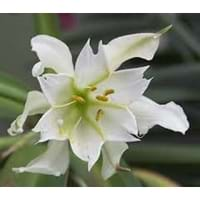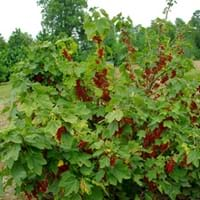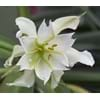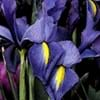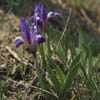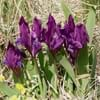Life Span
Perennial
Perennial
Type
Bulb or Corm or Tuber
Fruit
Origin
South America
Europe, Central Asia, Western Asia
Types
Pamianthe cardenasii , Pamianthe parviflora , Pamianthe peruviana
Rovada, ‘Red Lake’ AGM, Junifer
Number of Varieties
Not Available
Habitat
All sorts of environments
Broad-Leaved Forests, shores, Stream side
USDA Hardiness Zone
8-10
3-8
Sunset Zone
21,22
Not Available
Habit
Clump-Forming
Upright/Erect
Flower Color Modifier
Bicolor
Bicolor
Fruit Color
Green
White, Red, Pink, Ivory
Leaf Color in Spring
Dark Green
Green
Leaf Color in Summer
Light Green
Green
Leaf Color in Fall
Several shades of Green
Yellow, Green
Leaf Color in Winter
Light Green
Light Green
Leaf Shape
Strap shaped
Maple shaped
Plant Season
Spring, Summer, Fall
Summer
Sunlight
Partial Sun, Partial shade
Full Sun, Partial Sun, Partial shade
Type of Soil
Loam, Sand
Loam
The pH of Soil
Acidic, Neutral, Alkaline
Acidic, Neutral
Soil Drainage
Average
Well drained
Bloom Time
Spring, Late Spring, Early Summer, Summer, Late Summer
Early Spring, Spring
Tolerances
Drought
Drought
Where to Plant?
Ground, Pot
Container, Ground, Pot
How to Plant?
Offsets
Divison, Seedlings
Plant Maintenance
Medium
Medium
Watering Requirements
Keep the ground moist but not water-logged
occasional watering once established, Requires watering in the growing season
In Summer
Lots of watering
Lots of watering
In Spring
Moderate
Moderate
In Winter
Average Water
Average Water
Soil pH
Acidic, Neutral, Alkaline
Acidic, Neutral
Soil Type
Loam, Sand
Loam
Soil Drainage Capacity
Average
Well drained
Sun Exposure
Partial Sun, Partial shade
Full Sun, Partial Sun, Partial shade
Pruning
Pinch or prune as they grow to promote branching and bushiness, Remove damaged leaves, Remove dead branches, Remove dead leaves, Requires little pruning
Prune every year, Prune to half of its height, Prune to stimulate growth
Fertilizers
All-Purpose Liquid Fertilizer, High phosphorus
Citrus, Fertilize every year
Pests and Diseases
Leaf spot, Mosaic viruses
Aphids, Birds, Borers, Red blotch
Plant Tolerance
Drought
Drought
Flower Petal Number
Single
Single
Foliage Texture
Coarse
Medium
Foliage Sheen
Glossy
Not Available
Attracts
Bees, Birds, Bumblebees, Butterflies, Hummingbirds, pollinators
Birds
Aesthetic Uses
Beautification, Bouquets, Ornamental use, Showy Purposes
Showy Purposes
Beauty Benefits
No Beauty Benefits
Not Available
Environmental Uses
Air purification
Not Available
Medicinal Uses
No Medicinal Use
Iron, Phosphorus, Vitamin B, Vitamin C
Part of Plant Used
Not Available
Fruits, Whole plant
Other Uses
Beneficial species for attracting pollinators, Decoration Purposes
Culinary use, Used As Food, Used as Ornamental plant
Used As Indoor Plant
No
Yes
Used As Outdoor Plant
Yes
Yes
Garden Design
Bog Garden, Container, Feature Plant, Foundation, Mixed Border, Water Gardens
Edible, Fruit / Fruit Tree, Hedges, Mixed Border
Botanical Name
HYMENOCALLIS longipetala
RIBES rubrum
Common Name
Peruvian Daffodil, Spiderlily
Red Currant
In Hindi
peruvian daffodil
Red Currant
In German
peruvian daffodil
Rote Johannisbeere
In French
peruvian daffodil
Groseille
In Spanish
Pamianthe
Grosella
In Greek
peruvian daffodil
Κόκκινη σταφίδα
In Portuguese
peruvian daffodil
Groselha
In Polish
peruvian daffodil
Porzeczkowy
In Latin
peruvian daffodil
red RIBES
Phylum
Magnoliophyta
Magnoliophyta
Class
Liliopsida
Magnoliopsida
Order
Asparagales
Rosales
Family
Amaryllidaceae
Grossulariaceae
Clade
Angiosperms, Monocots
Angiosperms, Core eudicots, Eudicots
Tribe
Clinantheae
Not Available
Subfamily
Amaryllidoideae
Not Available
Number of Species
Not Available
Not Available
Season and Care of Peruvian Daffodil and Red Currant
Season and care of Peruvian Daffodil and Red Currant is important to know. While considering everything about Peruvian Daffodil and Red Currant Care, growing season is an essential factor. Peruvian Daffodil season is Spring, Summer and Fall and Red Currant season is Spring, Summer and Fall. The type of soil for Peruvian Daffodil is Loam, Sand and for Red Currant is Loam while the PH of soil for Peruvian Daffodil is Acidic, Neutral, Alkaline and for Red Currant is Acidic, Neutral.
Peruvian Daffodil and Red Currant Physical Information
Peruvian Daffodil and Red Currant physical information is very important for comparison. Peruvian Daffodil height is 61.00 cm and width 61.00 cm whereas Red Currant height is 120.00 cm and width 120.00 cm. The color specification of Peruvian Daffodil and Red Currant are as follows:
Peruvian Daffodil flower color: White
Peruvian Daffodil leaf color: Dark Green
Red Currant flower color: Green
- Red Currant leaf color: Green
Care of Peruvian Daffodil and Red Currant
Care of Peruvian Daffodil and Red Currant include pruning, fertilizers, watering etc. Peruvian Daffodil pruning is done Pinch or prune as they grow to promote branching and bushiness, Remove damaged leaves, Remove dead branches, Remove dead leaves and Requires little pruning and Red Currant pruning is done Prune every year, Prune to half of its height and Prune to stimulate growth. In summer Peruvian Daffodil needs Lots of watering and in winter, it needs Average Water. Whereas, in summer Red Currant needs Lots of watering and in winter, it needs Average Water.
